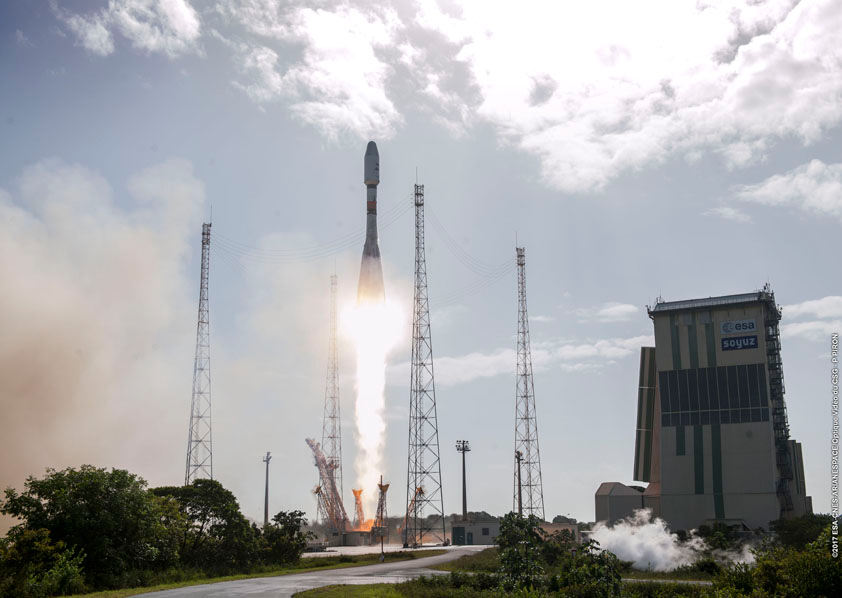Arianespace successfully launched a Soyuz rocket from French Guiana on 18th May, delivering SES-15 to a geostationary transfer orbit. It was the first SES satellite to be launched by Soyuz.
On its fifth mission of 2017, Arianespace successfully launched a Soyuz rocket from French Guiana on 18th May, delivering an all-electric telecommunications satellite, SES-15, to a geostationary transfer orbit.
The flight, designated VS17 by Arianespace, lasted 5 hrs., 18 min. until payload separation. It carried SES’ first satellite lofted by the medium-lift Soyuz launcher and the 40th overall launched by Arianespace.
It was the second Soyuz launch of the year for Arianespace.
Flight VS17 lifted off with a total payload mass of 2,447kg on the Russian-built Soyuz vehicle’s 17th mission from French Guiana since operations started in 2011.
More than 40 percent of the SES geostationary satellites currently in operation have been orbited by Arianespace – a number that does not include the O3b Networks satellites launched by Arianespace into medium Earth orbit.
Arianespace has five more SES satellites in its backlog – another electric satellite, SES-12, along with four additional O3b spacecraft.
Delivered into a geostationary transfer orbit by Soyuz, the telecom satellite will achieve its final position under the power of an all-electrical propulsion system – SES’s first satellite to use such technology.
From its position at 129 deg. West, SES-15 will serve as SES’ first hybrid satellite, offering a mix of wide-beam coverage and High Throughput Satellite (HTS) capacity. The coverage area extends over North America, Mexico and Central America, stretching from Arctic Alaska to the south of Panama and from Hawaii to the Caribbean.
SES-15 carries a Wide Area Augmentation System‐hosted (WAAS) payload, enabling the U.S. Federal Aviation Administration to augment the Global Positioning System (GPS), providing improving accuracy, integrity and availability for the aviation industry.
Built by Boeing, SES‐15 had an estimated liftoff mass of 2,302kg and is based on the company’s all‐electric 702SP platform. It is the first Boeing satellite to launch on Soyuz.

